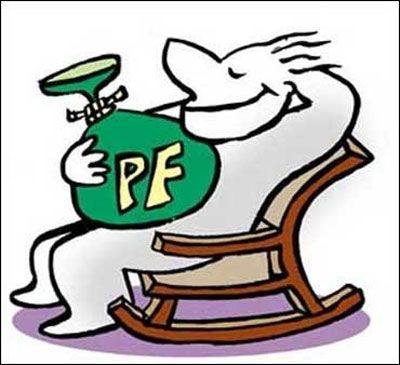 | « Back to article | Print this article |
Private-equity funds made an average annual return of just 7 per cent between January 2007 and December 2013 while the Sensex was up 11 per cent, notes Debashis Basu.
 It now appears that this Ministry of Finance is determined to nudge, goad and push the provident fund and other retirement corpus such as superannuation funds and gratuity funds into investing in venture capital and private equity funds.
It now appears that this Ministry of Finance is determined to nudge, goad and push the provident fund and other retirement corpus such as superannuation funds and gratuity funds into investing in venture capital and private equity funds.
Already, five to 15 per cent of the incremental corpus of the Indian provident fund money can be invested in equity and related instruments, including exchange-traded funds, units of mutual funds regulated by the Securities and Exchange Board of India, index funds and derivatives and also asset-backed securities and units of infrastructure investment trusts.
This change has got through without an iota of protest from any quarter, as opposed to the pitched battle being fought over changes in the land acquisition law.
Remember, every single party and their trade union arms have opposed the idea of channeling provident fund money into the stock market for 20 years.
Now that it has happened, there is barely any dissent. I have also not seen too many interpretations either of what this move will mean.
Firstly, there are fundamental differences between market-linked products like stocks and non-market-linked products like bonds held till maturity.
Even the smartest people take time to realise the real significance. Market-linked products like gold or stocks offer no guarantee of returns. They go up and down daily. And then suddenly, even the best of stocks can slump by 20-30 per cent.
Most of us are not trained to stomach this volatility. We value certainty. We hate an uncertain future. Fortunately, even after such volatility and occasional sharp declines, the difference between long-term returns from market indices like Sensex and safe fixed-income products like bank deposits is at least three to four per cent.
So, a monthly investment in exchange-traded fund (ETFs) for the really long term, makes sense. Incremental investment of five to 15 per cent is too little but it's a good start.
However, the government now appears to be pushing for retirement funds to be invested in venture capital and private equity fund. This would be an unmitigated disaster.
There is a fundamental difference between buying a market-linked product like index funds and betting on hand-picked funds. There are two main problems with investing with venture/PE funds.
Firstly, very few have proven themselves to be skilled at following the first rule of investing: buy assets when they are cheap and sell them when they are dear.
Of the $103 billion invested by private-equity funds in India between 2001-13, McKinsey & Co, consulting firm estimates that more than a quarter was invested at the peak of the market, in 2007 and early 2008. This was terrible timing.
Companies haven't grown as fast as expected, and the Indian rupee lost 25 per cent against the dollar.This has decimated the results of PE funds. Private-equity funds made an average annual return of just seven per cent before fees between January 2007 and December 2013, according to McKinsey, while the Sensex was up 11 per cent.
In other words, an individual investor who invested in an exchange-traded fund that tracked the Sensex (the kind that provident fund money will be invested in) would have made better returns than those who invested with the "masters of the financial universe" who run private-equity funds.
The McKinsey's study was based on the estimates of more than 600 PE transactions. According to the firm, PE investments made before the boom - between 1998 and 2006 - fared only slightly better, with a 21 per cent return. A comparable return for the Sensex in that period was 18 per cent.
But in the 1998-2006 period, the volume of investments was much smaller. Investments shot up during the boom years of mid-2000s. PE funds have been investing in India selectively since 1998, but they dived in headlong post 2006, lured by the soaring stock market.
This is exactly what retail investors do, something that smart PE investors were caught doing. McKinsey estimates that 65 per cent of all private-equity investment in India over the last 15 years was made when the Sensex was trading at a higher level than historical valuations. Investing at peak prices always means that subsequent returns would be poor.
Another major issue with investing in PE is the illiquidity. Over the years, the Indian government and the market regulator have hardly paid any attention to development of Indian capital market by improving effective governance (instead of checklist governance) and curbing market manipulation.
This would have brought more companies to the market, widened the body of investors and also created a thriving market for mergers and acquisitions. Lack of this has meant that many PE funds have not been able to exit from their investments.
Finally, many PE funds have a life of seven years, which alone makes them totally unsuitable as a long-term investing vehicle.
They are expected to return the money to their investors with a fat (25 per cent) compounded return over these seven years, sometimes extended to 10. However, exists have been few and far between. This has put off new investors. Would the government of India want to commit long-term funds of workers and employees to this losing idea?
The writer is the editor of www.moneylife.in